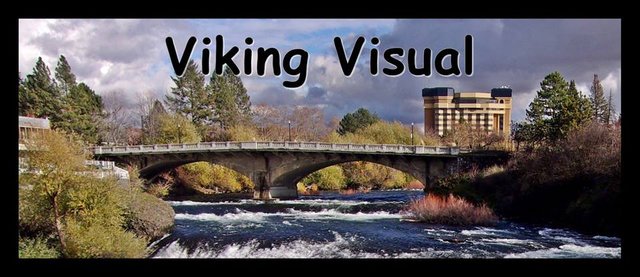Cow patties for organic house building. ---- Kuhfladen für den biologischen Hausbau
Other countries and other customs. Here we found out that the cow patties are still processed in the local villages and then dried as flat cakes.
I remember it from my own time when I lived in the South Seas. There I was almost 3 years on the Fiji Islands. Like here, the cow dung was processed and used for walls and waterproofing in house construction.
I must say that we Europeans are not in a better mood. We drink coffee that was eaten by a cat first and was then excreted and call this a delicacy..... In contrast, cow patties are the most harmless for house building.
The good thing about building with the cow patty is also that it looks nice and cool inside. Despite the heat outside during the day. Likewise, it doesn't smell anything once it gets dry. It is really hard and almost cement like in consistency. The optimal building material with biological properties.
Let us bear in mind that building with concrete and steel is always an extreme environmental burden. Biologically our western house construction is in no way! Not to mention all the paints and lacquers that come along. Basically, and if you look at it from a health point of view and natural reusability, we all build chemical bomb houses that make us sick to some extent in the long run or at least help us to get a disease faster.
I find it great that today this natural resource is used by the bold with a combination of earth and sand and I am convinced that this can be used much further if the builders of our time would deal a little more with this material.
Andere Länder und andere Sitten. Hier haben wir herausgefunden dass noch in den einheischen Dörfern die Kuhfladen verarbeitet werde und dann als Fladen getrocknet werden.
Ich kenne es noch aus meiner eigenen Zeit, als ich in der Südsee gewohnt hatte. Dort war ich fast 3 Jahre auf den Fidschi Inseln. Ebenso dort wurde wie hier die Kuhfladen verarbeitet und für Wände und Abdichtungen im Hausbau genommen.
Wer sich nun eckelt, dem muss ich sagen dass wir Europäer nicht besser drauf sind. Wir drinken Kaffee, der von einer Katze erste gegessen wurde und dann Ausgescheiden wurde und nennen dies eine Delikatesse.... Dagegen sind Kuhfladen für den Hausbau gerade das harmloseste dagegen.
Das Gute am Bau mit dem Kuhfladen ist jedoch auch, dass innen es dann schön kühl wirkt. Entgegen der Hitze, die draußen tagsüber herrscht. Ebenso riecht da gar nichts mehr, sobald es trocken wurde. Verarbeitetet wird es richtig Hard und schon fast Zement artig in der Konsistenz. Das optimale Baumaterial mit biologischer Eigenschaft.
Bedenken wir doch, dass der Bau mit Beton und Stahl auch eine extreme Umweltbelastung immer ist. Biologisch ist unser westlicher Hausbau in keiner Weise! Geschweige von den ganzen Lacken und Farben, die noch dazu kommen. Im Grunde und wenn wenn man aus der gesundheitlicher Sicht und natürlicher Wiederwerdbarkeit sieht, bauen wir alle Chemie Bomben Häuser, die uns auf die Dauer auch in gewissen Maßen krank machen oder zumindest dazu beitragen, dass wir eine Krankheit schneller bekommen.
Ich finde es Klasse, dass heute dieser natürliche Wertstoff von den Kühnen mit Verbindung von Erde und Sand verwendet wird und ich bin überzeugt, dass dies noch viel weiter verwendet werden kann, wenn sich die Baumeister unserer Zeit mit diesem Stoff ein bisschen mehr beschäftigen würden.
Kufladen bestehen doch aufgrund der Ernährungsweise zu fast 100% auf Pflanzenresten, also eigentlich kein Grund sich davor zu ekeln. Es ist ein güntiger und anscheinend auch guter Werkstoff aber mein Bett würde ich jetzt nicht unbedingt daraus bauen wollen xD
sehe ich auch so. Klar das Bett ist besser aus einem anderen Material :-) Dann lieber zum schlafen das pure Heu, aber das kratzt ja auch wieder :-))
Really? Where did you drink such a coffee in Europe? I have never heard of such coffee and never heard of people who drink cat shit.
yes, in Bali island, there is living such cats
ok. But not in Europe. Europeans do not drink cat shit.
as well European come to Bali to buy from that farmers this special coffee. it is very famous around the world , that coffee
You are right. Such coffee-shit is really produced in Indonesia: https://en.wikipedia.org/wiki/Kopi_Luwak
And there are shops for European market:
https://www.kaffeeshop24.de/product/kopi-luwak-wildkaffee.4681.html
No matter, how it tastes, I would not consume such ugly animal-shit. ;-)
Concerning cow-dung I would have no problem to use it as heating- or building material. Cow-dung also has antiseptic properties. In some parts of India cow-dung and -urine is also used on wounds for faster healing.
Ich mag mein Stein Haus lieber.
Es braucht dafür keinen Kuhdünger. (CO2)
Ist aber interessant zu erfahren, das in manchen Ländern oder Gebieten noch damit gebaut wird.
Ja, nicht nur die Wände, sondern auch der Boden wird damit gemacht. In der Wüste wo wir letzte Woche waren, da hat man den Boden der Unterkunft auch damit verbaut. Die Fasern konnte man noch im Boden erkennen. Hart wie Beton das Zeug und überhaupt kein Geruch
Hey, these houses are bullshit! 😝
Hola!!! me sacaste una sonrisa por eso te voto.
Ja! She's a brick house...she's mighty mighty...
Riecht doch im getrockneten Zustand nicht. :-)
Tolong kakak pilih saya
Fascinating! I've heard of people using cow patties as a fuel source, but not as a building material. Thanks for sharing.

You got a 4.53% upvote from @postpromoter courtesy of @redpalestino!
Want to promote your posts too? Check out the Steem Bot Tracker website for more info. If you would like to support the development of @postpromoter and the bot tracker please vote for @yabapmatt for witness!
Ich kenne Kuhfladen hauptsächlich als Anzünder fürs feuer oder allgemein als Brennstoff. Damit wäre mir der trockene Kuhfladen als Baustoff irgendwie zu riskannt. Ich will ja nicht, dass mein Haus abbrennt.